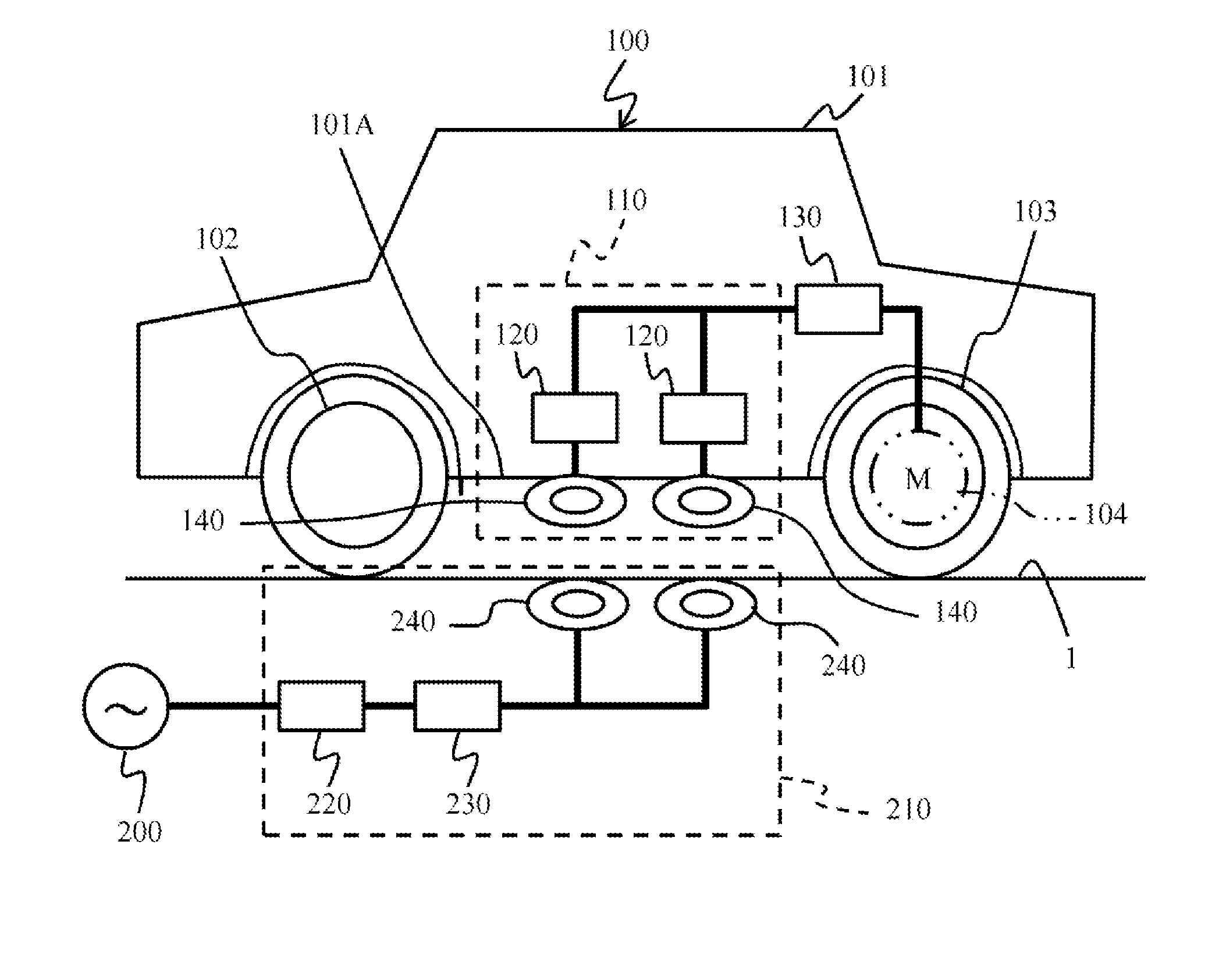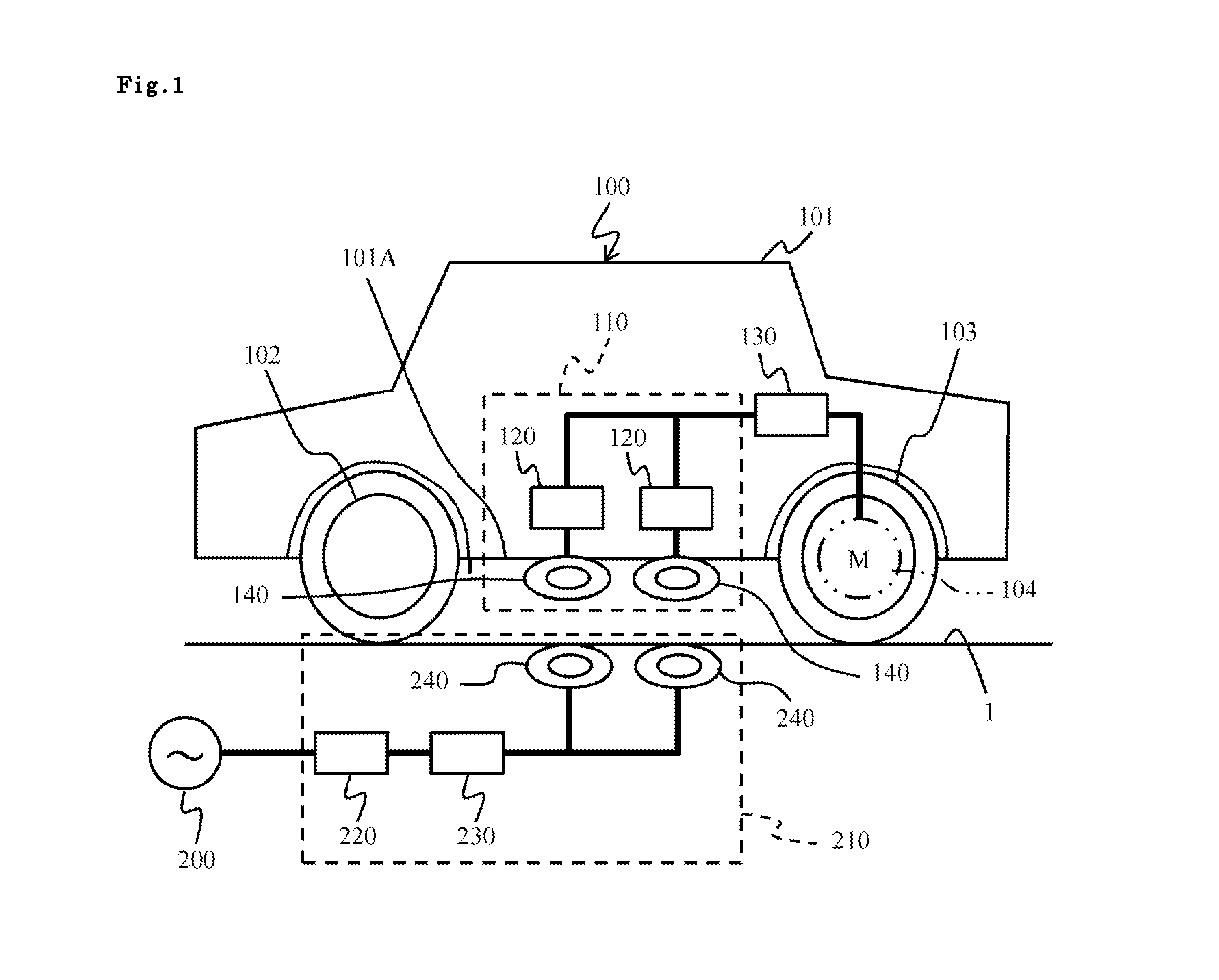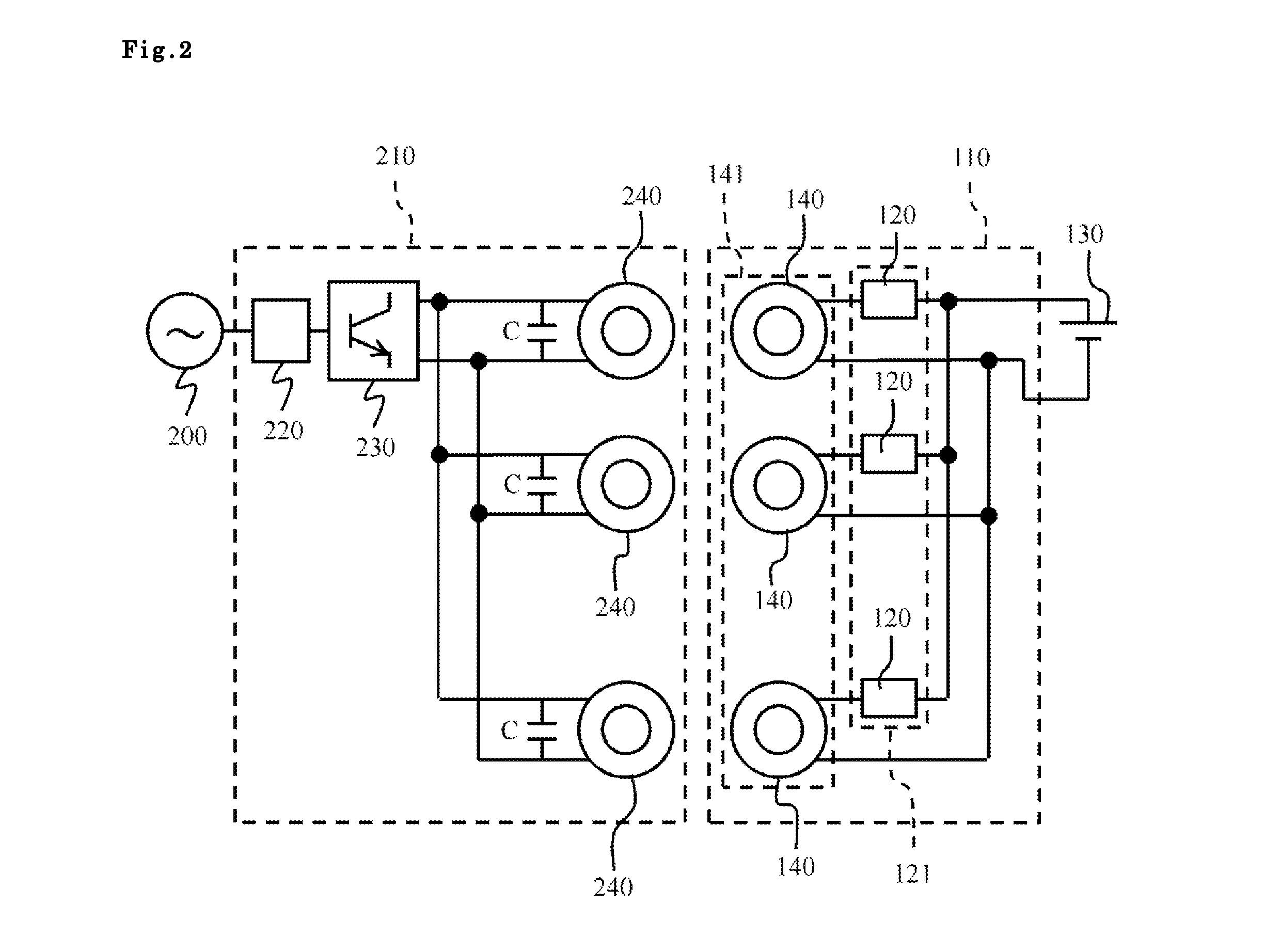Non-Contact Charging Apparatus for Mobile Body and Non-Contact Charging Method for Mobile Body
a technology of non-contact charging and mobile body, which is applied in the direction of charging stations, electric vehicle charging technology, transportation and packaging, etc., can solve the problems of difficult to find an area of sufficient size, difficult to charge a secondary battery mounted in the mobile body in a short period of time, and inability to enhance power transmission efficiency, etc., to achieve the effect of enhancing power transmission efficiency
- Summary
- Abstract
- Description
- Claims
- Application Information
AI Technical Summary
Benefits of technology
Problems solved by technology
Method used
Image
Examples
embodiment 1
[0029]A first embodiment will be described using FIGS. 1 and 2. FIG. 1 shows an example in which a non-contact charging apparatus for a mobile body is provided in an electric car 100 as the “mobile body”.
[0030]The electric car 100, for example, comprises a car body 101, a front wheel 102, a rear wheel 103, an electric motor 104, a steering device, an illumination device, and an air conditioner (none of which is shown in the drawing). This embodiment shows a case of rear-wheel drive, and the electric motor 104, for example, is provided inside the rear wheel 103.
[0031]The configuration of the electric car 100 is an example, and the electric car 100 may be a front-wheel-drive system, or may be driven using all four wheels. Also, the present invention may be applied to a mobile body such as an electric truck, an electric motorcycle, an electric wheelchair, and an electrically operated single-passenger mobile body (a so-called personal mobility device).
[0032]A plurality of power-receivin...
embodiment 2
[0043]A second embodiment will be described using FIG. 3. The following embodiments, to include this embodiment, are equivalent to variations of the first embodiment, and as such, the descriptions will focus on the differences with the first embodiment.
[0044]A power-receiving device 110A of this embodiment connects a plurality of power-receiving coils 140 and AC-DC converters 120 in series and stores received electric power in the secondary battery 130. A description will be given by assigning a reference sign 142 to power-receiving coils connected in series, and a reference sign 122 to AC-DC converters connected in series.
[0045]This embodiment, being configured like this, achieves the same operational advantage as the first embodiment. In addition, since each power-receiving coil 140 is connected in series in this embodiment, it is possible to obtain the desired voltage value by increasing the charging voltage to the secondary battery 130.
embodiment 3
[0046]A third embodiment will be described using FIG. 4. A power-receiving device 110B of this embodiment charges the secondary battery 130 by connecting in parallel a group of power-receiving coils 141 and a group of AC-DC converters 121 that are connected in parallel (parallel-connection group) and a group of power-receiving coils 142 and a group of AC-DC converters 122 that are connected in series (series-connection group).
[0047]Focusing on the power-transmitting device 210, with the exception of the fact that the number of power-transmitting coils 240 and the number of resonance capacitors C have increased in proportion to the increase in the number of power-receiving coils 140 of the power-receiving device 110B, the configuration is the same as that of the power-transmitting device 210 described in the first embodiment.
[0048]This embodiment, being configured like this, achieves the same operational advantage as the first embodiment. In addition, in this embodiment, it is possib...
PUM
 Login to View More
Login to View More Abstract
Description
Claims
Application Information
 Login to View More
Login to View More - R&D
- Intellectual Property
- Life Sciences
- Materials
- Tech Scout
- Unparalleled Data Quality
- Higher Quality Content
- 60% Fewer Hallucinations
Browse by: Latest US Patents, China's latest patents, Technical Efficacy Thesaurus, Application Domain, Technology Topic, Popular Technical Reports.
© 2025 PatSnap. All rights reserved.Legal|Privacy policy|Modern Slavery Act Transparency Statement|Sitemap|About US| Contact US: help@patsnap.com



